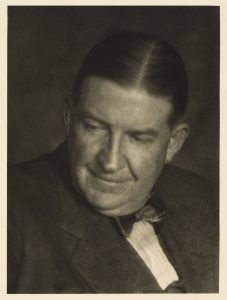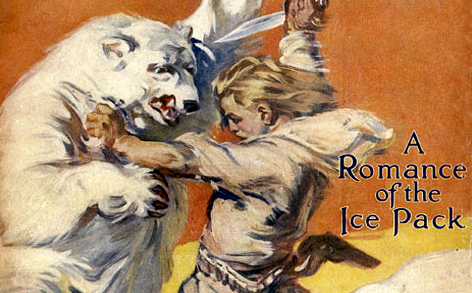 When one considers the editors of the pulps, invariably thoughts turn to the writers they discovered or nurtured. It is the authors and their stories that measure a magazine’s editor.
When one considers the editors of the pulps, invariably thoughts turn to the writers they discovered or nurtured. It is the authors and their stories that measure a magazine’s editor.
For BLACK MASK editor Cap Shaw, it was W. T. Ballard, Paul Cain, Raymond Chandler, George Harmon Coxe, Norbert Davis, Horace McCoy, Frederick Nebel, Roger Torrey, Raoul Whitfield, and many others. Shaw also brought Dashiell Hammett back to the magazine, and helped to develop his skills as a novelist. After his return to BLACK MASK, Hammett wrote RED HARVEST, THE DAIN CURSE, THE MALTESE FALCON, and THE GLASS KEY.
Street & Smith’s John W. Campbell — editor of ASTOUNDING SCIENCE FICTION — helped stage The Golden Age of Science Fiction. He encouraged Isaac Asimov, Arthur C. Clarke, Lester del Rey, Robert A. Heinlein, L. Ron Hubbard, Clifford D. Simak, Theodore Sturgeon, A. E. van Vogt, Jack Williamson, and others to expand their thinking and storytelling.
At WEIRD TALES, it was Farnsworth Wright at the helm. He published Robert Bloch, Hugh B. Cave, August Derleth, Edmund Hamilton, Henry Kuttner, C. L. Moore, Seabury Quinn, Henry S. Whitehead, and, most importantly, Robert E. Howard, H. P. Lovecraft, and Clark Ashton Smith. Artists Hannes Bok, Margaret Brundage, and Virgil Finlay also contributed to “The Unique Magazine” during Wright’s tenure.
What of the great hero pulps that inspired countless imitators? Walter B. Gibson’s THE SHADOW and Lester Dent’s DOC SAVAGE owed a great deal to Street & Smith editor John L. Nanovic. He was also in charge of THE AVENGER — written by pulpsmith Paul Ernst — and other titles.
Other greats included Daisy Bacon of LOVE STORY; ADVENTURE editor Arthur Sullivant Hoffman; Donald Kennicott, editor of BLUE BOOK; Standard Publications’ “Little Giant” Leo Margulies; and Rogers Terrill, who helped develop the weird menace genre and a great deal more for Popular Publications.
Towering over them all was Robert Hobart Davis, born in Nebraska on March 23, 1869. Trained in the newspaper industry, Davis became the managing editor of Frank A. Munsey’s NEW YORK SUNDAY NEWS in the early 1900s. He soon shifted to fiction editor for MUNSEY’S MAGAZINE. As he added more magazines to his stable, Munsey turned them all over to Davis. THE ALL-STORY MAGAZINE, THE CAVALIER, RAILROAD MAN’S MAGAZINE, THE SCRAP BOOK, and others were all edited by Bob Davis. But what of his writers?
Before others landed him, Davis signed William Sydney Porter — better known as O. Henry — to a five-year contract. It gave Munsey first look at the author’s works. According to Richard Cary, Bob Davis was also the literary godfather to “Edgar Rice Burroughs, Zane Grey, Edison Marshall, Mary Roberts Rinehart, Octavus Roy Cohen, Max Brand, Fannie Hurst, Israel Zangwill, Dorothy Canfield Fisher, Sophie Kerr, Frank L. Packard, Montague Glass, Arthur Somers Roche, Faith Baldwin, James Oliver Curwood, Rex Beach, Louis Joseph Vance, Charles Van Loan, and Ben Ames Williams.” Other writers that he developed included science fiction, fantasy, and adventure fiction greats Ray Cummings, George Allan England, Homer Eon Flint, J. U. Giesy, Austin Hall, A. Merritt, Garrett P. Serviss, and Charles B. Stilson. Davis also acquired the rights to Joseph Conrad’s last major work, “Victory,” for MUNSEY’S MAGAZINE.
Davis protégé Sam Hellman knew of no other editor who had “graduated more writers from pulp to prominent pay.” Pulp historian John Locke also noted that, “More than sixty authors — many of them well-known — dedicated their books to Bob Davis.”
So what was Davis’s secret? According to Richard Cary:
As to Davis’s “force,” it had two salient strands: first, his philosophy of friendship; second, his tremendous versatility. Making friends was his principal hobby; “Know lots of people” his favorite slogan. He was intrigued by the potentialities in human relationships and the values accruing therefrom. He felt that “Every important advancement you ever made was . . . due to some acquaintance,” and he wasn’t talking about opportunism. Because his own capacity to give was inexhaustible he believed that everyone had within him the spark to brighten derelict spirits or to ignite lagging talents.
 Bob Davis asked his writers to emphasize character. In 1920, William C. Lengel wrote, “Life is the thing that interests Davis. Life and people. Strange as it may seem he says that ‘plot’ is of no considerable importance, that character in a story is everything. It is the characters and the interest in them that make plot and suspense, he says. Dramatize the moment. Put life into fiction.”
Bob Davis asked his writers to emphasize character. In 1920, William C. Lengel wrote, “Life is the thing that interests Davis. Life and people. Strange as it may seem he says that ‘plot’ is of no considerable importance, that character in a story is everything. It is the characters and the interest in them that make plot and suspense, he says. Dramatize the moment. Put life into fiction.”
During the summer of 1920, ALL-STORY WEEKLY was merged with ARGOSY. Bob Davis lost his editorial chair to the longer tenured ARGOSY editor Matthew White. Leaving behind most of his editorial duties, Davis launched Service for Authors, a literary agency that was sponsored by Frank Munsey.
Following the death of Munsey in late 1925, Davis became a columnist for THE NEW YORK SUN. Appearing three times a week, the column “chronicled Davis’s adventures, opinions, perceptions and personal encounters as he traveled for the SUN.” The former Munsey editor passed away in Montreal in October 1942. He was traveling for his “Bob Davis Reveals” column.
Bob Davis “harbored no stainless illusions about himself.” He wrote about himself in 1928: “What little success I have achieved as an editor is due entirely to the fact that I have never at any time considered myself a better writer than my contributors. Nor have they.”
(Charles B. Stilson — the author of “Polaris of the Snows” — featured on the cover of ALL-STORY WEEKLY for December 18, 1915, with cover art by P. J. Monahan — was just one of many writers discovered and/or nurtured by Robert Hobart Davis.
In 1925, photographer Doris Ullman published a photograph of Davis in A PORTRAIT GALLERY OF AMERICAN EDITORS: BEING A GROUP OF XLIII LIKENESSES. Arthur Sullivant Hoffman of ADVENTURE and Charles Agnew MacLean of THE POPULAR MAGAZINE are also included in Ullman’s portfolio.
If you’d like to read more about Robert Hobart Davis, we very much recommend Richard Cary’s “Ben Ames Williams and Robert H. Davis: The Seedling in the Sun,” published in the September 1963 issue of COLBY QUARTERLY. Click the link in the previous sentence.
You’ll also find extensive information about Davis in Sam Moskowitz’s UNDER THE MOONS OF MARS: A HISTORY AND ANTHOLOGY OF “THE SCIENTIFIC ROMANCE” IN THE MUNSEY MAGAZINES, 1912 – 1920 (Holt, Rinehart, and Winston, 1970), John Locke’s THE OCEAN: 100TH ANNIVERSARY COLLECTION (Off-Trail Publications, 2008), and “Bob Davis of MUNSEY’S,” originally published in the January 24, 1920 issue of ADVERTISING AND SELLING. It was republished by Sai Shankar on February 1, 2014 on his PULP FLAKES blog.
Finally, if you’d like to read “I Am the Printing Press,” one of Bob Davis’ best-remembered pieces, click the link in this sentence.
Writer, anthologist, and pulp historian Gene Christie will offer a presentation on Bob Davis at PulpFest 2019. We hope you can join us at the DoubleTree by Hilton Hotel Pittsburgh – Cranberry in August.)







